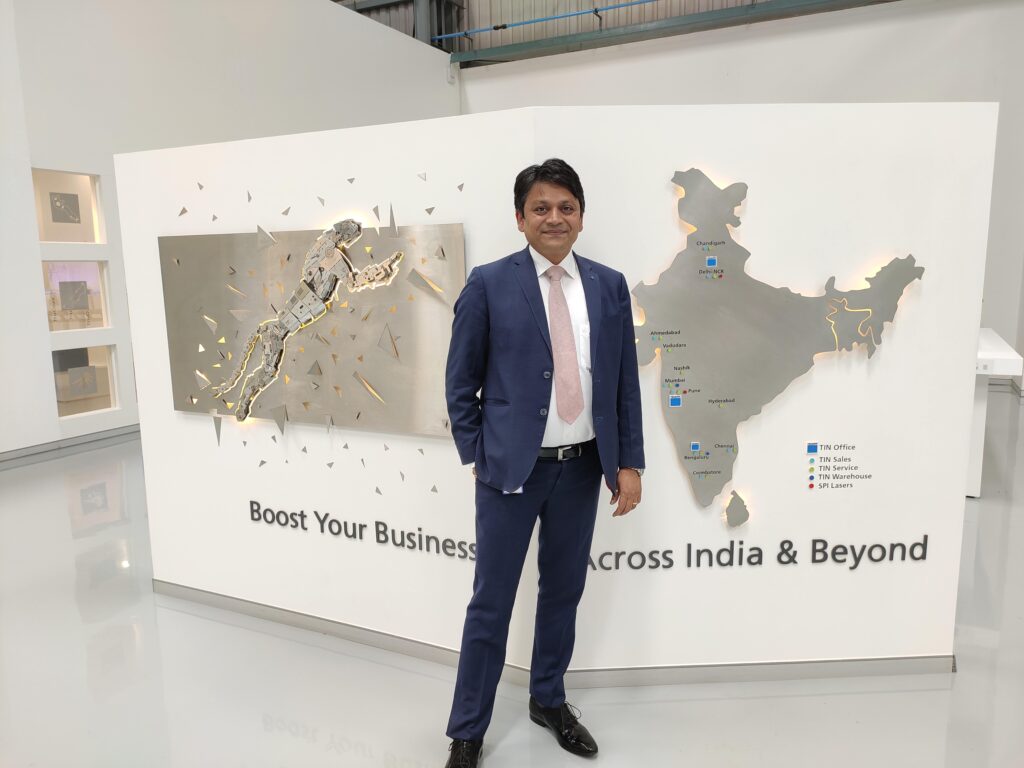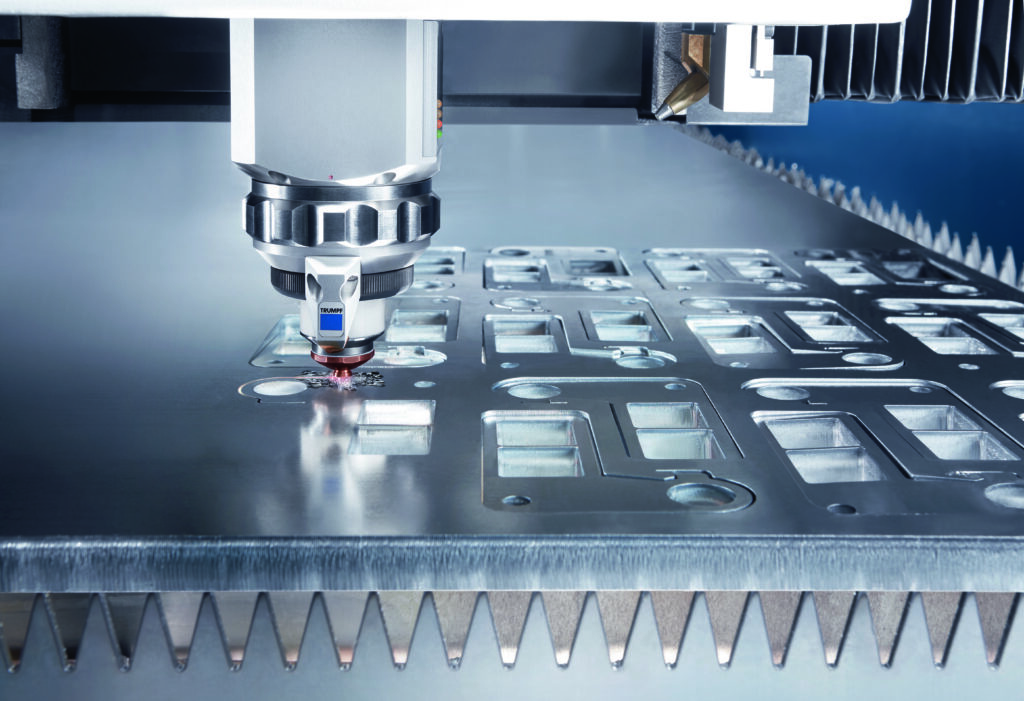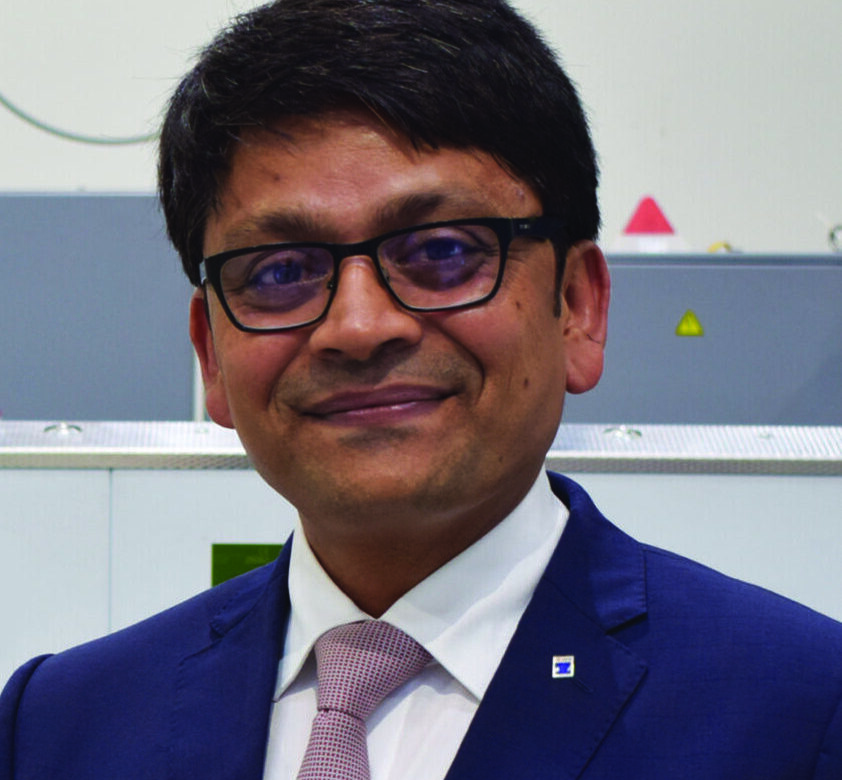In conversation with Pradeep Patil, Managing Director, TRUMPF (India) Pvt. Ltd.
TRUMPF showed a positive global performance despite a challenging 2019-20 fiscal with €3,487.7 million in sales. The past year presented enormous challenges for the manufacturing industry as a whole worldwide. The machine tool industry being an important element too faced the heat. That said, TRUMPF an acknowledged technology leader in the space not only braved the odds but also bucked the trend to record a consistent and positive performance.
In a recent interaction with DMI Pradeep Patil, Managing Director of TRUMPF India, spoke at length about the factors that lay behind the company’s consistent performance globally and within India while sharing insights about markets and consumer trends that would likely influence the business in the coming years. Presenting, the edited excerpts.

I have two questions, to begin with. One, what were the defining factors that led to the positive performance in fiscal 2019-20? And the second, how has the Indian arm fared in terms of performance during this time?
Pradeep Patil, Managing Director, TRUMPF (India) Pvt. Ltd:
Sailing against the tide, and that too of the kind that we face today calls for strength and courage. Strength within is where one starts. Thanks to our consistent implementation of the “Koyer” earnings improvement program, TRUMPF could effectively stem the decline in its EBIT margins. Scaling back expenditure, both capital and non-personnel besides improving upon efficiency helped the company to achieve a commendable 8.9 percent in earnings.
Collaborations, internally between employees, and externally with our customers made it possible to address the challenges of the time. Adding to these were steps implemented to cut costs in the wake of the pandemic that included utilizing excess balances on working time accounts and accumulated vacation days. Shorter working hours as a consequence of the lockdown too helped to slow the decline in the group’s earnings.
Playing an equally important role in our success has been the group’s courage to transform, it’s aligning with changing market needs, a “Customer First” approach, and a legacy of innovation and use of the right technology besides our strong support infrastructure and digital transformation initiatives.
TRUMPF India, I am particularly glad to inform you that TRUMPF in India is celebrating its 15th Anniversary. For the journey thus far, my sincere gratitude goes towards our employees and their families, our esteemed and loyal customers, and our business partners. Their TRUST in us has been a great source of motivation and encouragement over the years.
The last quarter of the financial year 2019-20 brought with it unforeseen and unprecedented situations primarily due to the lockdown-related restrictions. While it did present seemingly insurmountable challenges, it also brought with its unparalleled learnings that shall redefine the path towards solutions in the days to come.
Handholding customers during these difficult times and blending it with our latest technological solutions played a vital role in garnering and maintaining their TRUST towards TRUMPF while reemphasizing the element of PARTNERSHIP. As mentioned earlier, our employees and their families are the reason behind our customers’ trust in TRUMPF with our employees have gone the extra mile to ensure continued and undiminished support even during the worst phase of the pandemic.
Our focus has always been on supporting our customers’ interests by adopting the right means including going digital. Despite the apparent slowdown, what’s encouraging is the pulse of growing consumption of machine tools since the last few months that are attributed to various factors including a surge in demand from various sectors, and positive initiatives like the Atmanirbhar Bharat policy that envisions an industrially self-reliant India.

Following your MTech from BITS Pilani, you have worked for close to two decades in senior capacities in some of the most known names in the machining and machine-tool industry including your present stint with TRUMPF. My question to you: What’re the leadership principles and skills you learned thus far that are proving useful as an organizational and industry thought leader in the present?
Having aligned me with the latest approaches in situation handling and challenges to success, a few fundamentals that are always needed at the core of leadership to steer towards any situation have been pivotal to me, and have over the years become my guiding principles. These include: leading by example, driving change management and displaying the courage to transform, adopting a customer-centric approach, and lastly, ensuring strict compliance with processes and collaborations.
Leadership is an evolving process and the reason how one becomes more adaptable with time. That’s precisely what I’ve been practicing for a while now. As importantly, people, customers, and businesses should be at the center of any strategy to make it a success. This ability and vision I am convinced are some of the most important leadership attributes. I’ve been practicing these values for achieving sustainable growth within the organization and to society at large.

As per the recent IIP figures, India’s industrial growth showed an output growth of 22.4 percent YOY in March this year on account of last year’s low base. Industries like automotive and electronics are also reporting minor gains. That being the case, what’s your outlook and assessment about which industries that would perform well and which could be the laggards, as also the impact of these trends on machine-tools sales?
“Corona resilient industries” include switchgear, sports equipment, material handling, medical devices, agricultural machines, construction equipment, packaging and food processing, etc. will continue to remain focus areas for machine tools as they are expected to continue their growth trajectory.
Furthermore, considering the ambitious plans of the Government of India on infrastructure projects, the outlook for this segment too looks promising.
Further, E-mobility being an important part of the Government of India’s green initiative is gaining momentum. The penetration of EVs is expected to be driven by stringent emission norms, incentive schemes, well-defined long-term policies, standardization of charging infrastructure, and a structured approach to reduce dependency on imports.
The ‘Faster Adoption and Manufacturing Electric, and Hybrid vehicle (FAME) schemes, Production-Linked Incentives, and state governments’ policies towards EV are reasons that can be expected to promote the demand for EV. It would improve localization, increase cost competitiveness, and develop a complete ecosystem.
I expect a rapid pace of development in this sector that shall add immense value to the use of Lasers in the business. Personal mobility and electronics present good potential for lasers, and for machine tools companies that cater to the segment.
Agriculture as an evergreen industry posed excellent growth rates even during the first phase of the lockdown thereby contributing immensely to the country’s GDP. The sector’s continuing growth will percolate down effectively to the machine tool industry given that agriculture and allied industries constitute some of the biggest consumers of machine tools.
Ambitious plans of the government under the “Atmanirbhar Bharat” initiative are likely to create a surge in electronics and control systems. This would be in addition to strengthening the manufacturing sector under the “Make in India” initiative and would ultimately support the growth of the machine tools and lasers industry.
Segments badly hit by the pandemic include hospitality, shared mobility, and aviation.
In general, the first lockdown was followed by an inherent demand that continued even during the second wave. The recent lockdown restrictions have been handled relatively with minimum collateral damages to the industry.
Speaking of consumer trends, smart infrastructure support during the various phases of the lockdown was crucial in enabling and maintaining higher uptimes for machine-tool manufacturers thus making it an influencing factor for new investments in the industry. While the cost of ownership remains critical for the sustainable growth of any business, in the case of the machine tool industry, it remains one of the determining factors for customers. Besides these, domain experience and knowledge are the other primary drivers of new investment and decision-making in the field.
To sum up, we are not too far from an overall healthy market recovery. The present trends of driving businesses with automation, digitalization, and new technologies are gaining traction in sectors including infrastructure, automotive, e-mobility, and agriculture.
Furthermore, with Capex and OPEX becoming an integral part of decision-making, the spectrum of investment planning is changing for the better. With ROI (Return on investment) still remaining at the core of any decision-making process, there’s a growing awareness of advanced, more sophisticated technologies that shall bring greater benefits to every stakeholder in the ecosystem.

Can you share a few examples of such technologies?
In addition to Additive manufacturing, I am referring to technologies such as AI (artificial intelligence), digitalization, and automation.
What’s your experience and perspective on how these advanced technologies are being deployed in the manufacturing sector?
There’s a growing awareness of these technologies in the industry. Of course, the implementation, in general, has started only recently in a few segments. A wider application may take a while. That said, time’s not far when you’ll have a wider implementation of these technologies in the market.
Considering that automotive is the largest customer of the machine tools industry, how do you see its growth in India during the current phase and hereafter?
In the past four years, the automotive industry has seen phenomenal growth. While the first phase of lockdown did bring the industry to a halt but since August 2020 the performance of the industry, in general, has been excellent –clocking double-digit growth. In the present, the second wave, the industry once again faces numerous challenges that in my opinion are more to do with supply-chain disruptions, itself the outcome of the Covid-19 crises.
Moving forward, the automotive industry, I opine should see growth picking up pace in the next few months as we are almost out of the second wave with consumer sentiments on the verge of turning positive. Automotive for that matter is expected to record strong growth in the next coming years, at least till 2025 with a minimum CAGR in the range of 5 to 6 percent.

The electric mobility sector in India was earlier focusing on shared mobility as a strategy. In many parts of the country EV makers had tied up with cab aggregators and other such companies to give people an experience of electric vehicles. But with Covid-19, the shared mobility strategy has taken a backseat, as people now prefer traveling in private vehicles. This could impact passenger behavior for the longer term too. How do you see this shift away from shared mobility impacting India’s e-vehicle industry?
Shared mobility as an industry might face this challenge for the next 12 to 18 months. Electric vehicles being equally good and useful for personal mobility as they are for shared mobility, I don’t foresee this challenge in the automotive industry remaining for long.
I believe the overall strategy of EV makers won’t change given that it’s for the long haul. As you are aware, E-mobility is one of the best long-term solutions in the domain of mobility that the world and the country have in its purview in the present.
The OEM’s focus shall thus not change and they won’t stop investing in the further development of EVs. As I stated before, the government is reinforcing the necessary support for charging infrastructure. Strengthening the government’s vision on charging infrastructure are investments that have started to trickle in, and which should see things fall in place shortly. The focus on E – mobility, personal or shared will therefore continue; the challenges being short-lived, the overall emphasis on e-mobility shall remain.

In the past year, digitalization has become a crucial tool for companies to be able to face unprecedented challenges, both external and internal, and keep the growth momentum going. Could you share with us a view of how digitalization’s importance has increased in recent times and tell us about your top digitization initiatives and offerings?
Digitalization has been a prime focus area for TRUMPF’s business for a long. It’s been so even before the pandemic.
Digitalization on its part offers new opportunities to recognize and record the productivity of machines, and how they can be used better for a wider range of jobs.
Digitalization has acquired added significance with the ongoing Covid-19 crisis as businesses now need to drive growth and support their customers by digital means.
In the course of the ongoing pandemic, we have witnessed a positive shift in Indian buyers’ thoughts towards digitalization What was once considered as the cordoned-off domain of IT is now turning into a necessity. With the awareness in India of the advantages of digitalization, most of us have realized its capability at value addition.
Besides others, it can be used to map productivity and availability of machine tools with progressively less dependence on manpower. This in turn has added value to the machine tool buyers for the lifetime of the machines. As an example, customers who had apprehensions about the use of smart functions in machines have now started to ask for the same. As a result, high-end technology or “Smart” machines are now in demand. Digital transformation brings incremental and multiple step-forward to better deliver the core value proposition to the ecosystem.
Being a technology leader, TRUMPF is empowering its customers with various digital tools and smart functions in its machines both new and old. Towards the later, we also undertake up-gradation to bring most of our old machines to the level of new “smart” machines. A few of our “smart” initiatives include TruConnect Solutions, TRUMPF Visual Assistant, TRUMPF Smart Glasses, and others. Moreover, we are soon going to launch an exclusive service portal for our Indian customers to digitalize the post-sales support on spare parts and services.
At TRUMPF we too have gone digital with various initiatives including in-house virtual exhibitions, new virtual product launches, and LIVE online machine demonstrations for Indian customers from TRUMPF Customer Center at Germany. All these have registered immense and encouraging participation from India.
That’s how we see the digital transformation taking place! It’s fast becoming an integral part of the machine tool industry with awareness about it in India taking place at break-neck speeds.
To sum up, with this transformation journey, our focus remains on three target groups: TRUMPF customers and Associates, TRUMPF as a company, and TRUMPF employees!
Do Visit – https://www.trumpf.com/en_IN/
This article was published in Dynamic Manufacturing India, May-June 2021 issue as a Cover story, Written By Aanand Pandey, Editor in Chief
E copy of the magazine – https://www.machineinsider.com/dmi-may-june-2021/


